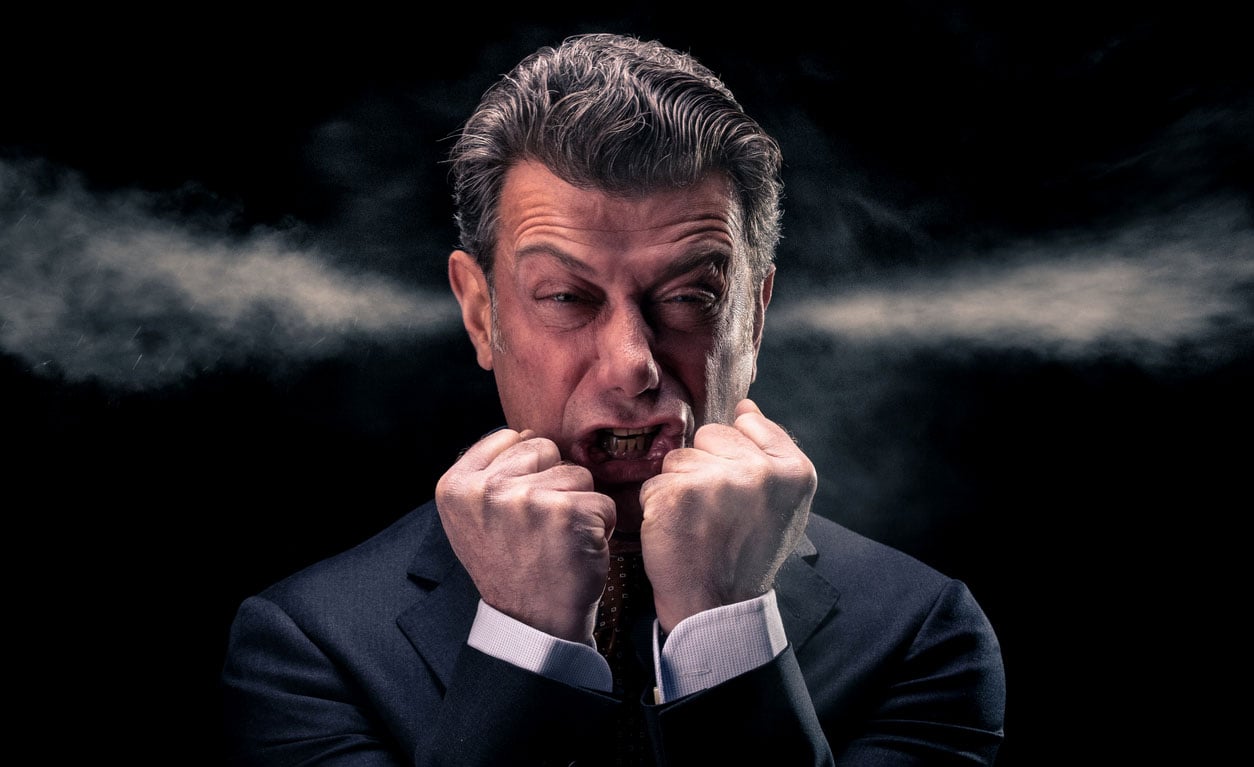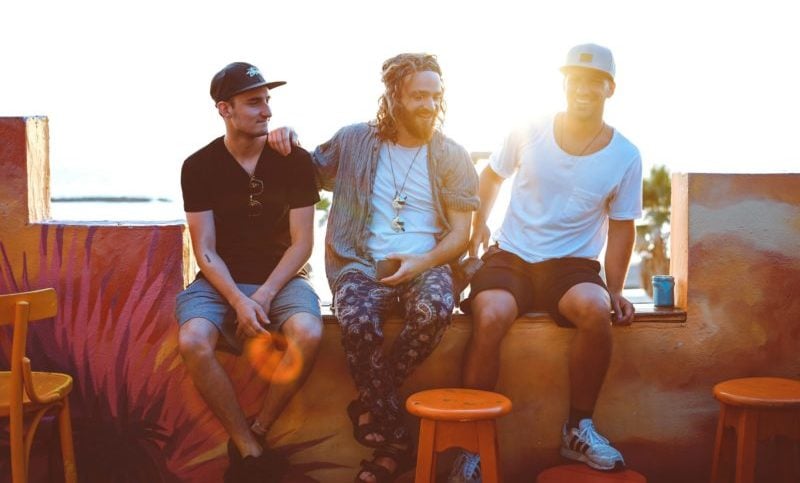
“Drinking the Kool-Aid” is a phrase that often has negative connotations. It can mean buying into the B.S. of a corporate philosophy if you don’t actually believe in it. It can mean following someone to the point of having blind obedience and loyalty, and not being able to think for yourself.
I’ve heard the phrase in a positive manner before: right before I entered my teaching program, one panelist gave us the advice to “drink the Kool-Aid” for teaching techniques we learned through the program. At the end of the day, even if we disagreed with the techniques, they helped us get a teaching certificate and a job. To “drink the Kool-Aid” meant to ignore our personal doubts in favor of the group philosophy.
The phrase also has a very dark origin.
It originated from the murder-suicide of over 900 people, an event that marked the most death of Americans in a single event until 9/11.
The event was known as the Jonestown massacre, which was perpetrated by a cult called the Peoples Temple of the Disciples of Christ, run by reverend Jim Jones.
Jones and the Peoples Temple urged their followers to drink poison in their secluded Guyanan jungle settlement, Jonestown.
What happened at Jonestown, and how did over 900 people die?
Who was Jim Jones and what was the People’s Temple?
According to PBS, Jim Jones was born in rural Indiana, in a town called Crete. Jones was born to James Thurman Jones, a veteran of World War I, who survived mustard gas attacks during the war. His mother, Lynetta Jones, was much younger than his father. Both parents were not involved much in his upbringing — his mother worked a lot, and his father was emotionally absent.
The chemical weapons attack left Jones’s father disabled. While the Jones family received disability checks, the family would eventually be evicted during the Great Depression as they suffered financial difficulties.
His upbringing was very challenging. Jones was known as a troublemaker as a child, but his family continued to suffer from poverty. They did not have plumbing and electricity during the Great Depression. He was frequently hungry.
Jim Jones turned to religion as a safe haven. He visited many different churches, including Quaker and Methodist churches. But many remembered Jones’s impressive preaching skills, even when he was in high school one person who dated Jones, Phyllis Widmore, said he gave a rival high school basketball team a funeral, a moment where she realized his strong religious fervor and preaching talent.
Eventually, Jones would build his own church. He married his wife, Marceline Baldwin, a nursing student, in 1949. He also became a student pastor at the Somerset Methodist Church of Indianapolis in 1952. Four years later, he founded his own church, the Peoples Temple.
One of the biggest influences on Jones was Father Divine — a Black preacher with a multiracial congregation. Father Divine founded the Universal Peace Mission Movement.
The Peoples Temple was known for fighting against segregation and being on the side of social justice. He left the Somerset Methodist Church due to its opposition to racial integration, and he held racially integrated services. During those services, Jones claimed he could “heal” people. Jim Jones claimed to be God, and also
Biography says Jones moved the People’s Temple to Northern California in the mid-1960s. He was very involved in the civil rights movement. Jim Jones was a socialist who helped make great progress integrating Indianapolis. It’s important to note Jones led a very racially integrated church — about 80% of his followers were Black.
Jones legitimately helped many people in need before the more grotesque events at Jonestown. He was an incredibly charismatic leader who would perform acts of service. He combed his hair back, wore sunglasses, and started having bodyguards once he got famous.
He particularly empathized with vulnerable people in society — the poor, the homeless, racial minorities, and more. He seemed to practice what he preached — he adopted three Korean children, a Black son named Jim Jones Jr., one white child, and they had one biological son. Some described his family as a “rainbow family.”
He played an instrumental part in the racial integration of Indianapolis as the head of the Indianapolis Human Rights Commission. He desegregated many restaurants, hospitals, and the police department. This made him incredibly unpopular to many residents, but he stood his ground.
Jonestown
Beneath the surface, Jim Jones did not treat his followers well. The FBI says rumors surfaced of Jones beating his followers, making them perform forced labor, and imprisoning them. Allegations from his religious group (which we now know as a cult) made it sound more like a slave camp than a religious group. Some accused Jones of using drugs to control his followers.
Jones was also a hypocrite. He discouraged sexual relationships but had multiple affairs, including one with a church administrator, with whom he had a child. Gradually, Jim Jones created a cult — and he did it incrementally.
In 1974, Jones moved the Peoples Temple to Guyana. There, his followers received little food, and guards prevented them from leaving. Armed guards defended the perimeter of the compound, vowing to shoot anyone who wanted to leave the camp. Jones also conducted what Biography calls “suicide drills.” He would wake up his followers at night, order them to drink a cup he said had poison, and then reveal the cup had no poison. It was a test of his followers’ loyalty to him.
By the late 1970s, in 1977 and 1978, one member of the Peoples Temple asked the Guyanese government to help her regain custody of her son. Another member spoke out against the Peoples Temple, and many family members expressed concern about their loved ones being in a cult.
In November 1978, Congressman Leo Ryan went to visit Jonestown to investigate these allegations. Bonnie Yates, a writer for Alternative Considerations of Jonestown and Peoples Temple, says Ryan had a very investigative style to find facts, which some critics called publicity stunts. Some said it compromised his and others’ safety. To the latter point, Ryan’s critics were right.
But Ryan had a personal connection to Jonestown. His college roommate, Sammy Houston, had a son who was in the Peoples Temple. Houston’s son died under “suspicious circumstances,” Yates says. This led Ryan to take more of a personal interest in Jonestown. He talked to Tim Stoen, who claimed Jones stole his son. Pressure mounted on Ryan to act, and he visited Guyana soon after the defection of another member, Deborah Layton Blakely.
The Jonestown Massacre
Ryan went to Jonestown on November 18, 1978. He brought a television crew with him as part of his documentation of the effort, and Jones wanted people on the compound to leave with him. Some defected and drove with Ryan to the airstrip.
However, members of the Peoples Temple weren’t going to allow Ryan and the defectors to leave that easily. In particular, Jones sent gunmen to attack them. Layton Blakely’s own brother shot at Ryan and the camera crew.
The gunmen killed Ryan, an NBC correspondent, a cameraman, and a photographer. One defector was also killed. However, many others survived the attack.
Jones panicked as a result of this high-profile killing that would have very clear consequences. He then coerced his followers to engage in a “revolutionary suicide” act.
He decided to poison his followers and offered them the choice of whether or not to take the poison or not.
Interestingly enough, he never gave his followers Kool-Aid. Instead, he used a grape-flavored powdered drink, mixed with cyanide. He told his followers to drink the punch. It was Flavor Aid, not Kool-Aid.
Some members, including Christine Miller, said “I’m not ready to die.” Miller said the children and babies in Jonestown deserved to live. She claimed she was her own individual, who had a right to what she thought and felt, that she had her own right to her destiny. Above all, Miller claimed the right to her own opinion, in a crowd of people who blindly followed Jones.
Jones, however, urged death because people in Jonestown would be tortured once the murders of Ryan and the rest of the television crew were discovered.
First, he wanted to kill the children. Anyone who did not drink the punch was killed by armed guards, and over 900 people took their own lives with the punch. Even Jones’s wife, Marceline, did not want children to die, but Jones had her restrained. This included fourteen members of Jones’s family, including four of his children. Miller was among those who died.
85 people survived the massacre, some hiding in the jungle, and some hiding in ditches. The Jonestown basketball team was also away and survived.
Jones himself would not drink the punch. Instead, he killed himself by shooting himself or having someone else shoot him.
Takeaways
How much personal agency did the Jonestown victims have? While we can say they were adults with their own decision-making capabilities, Jones used the intimidation of armed guards and mistreatment of people at Jonestown to coerce them into taking the poison.
45 minutes of the massacre are taped in what is now known as the Death Tape. A transcript is attached — but it is incredibly graphic and triggering, so read or listen to the tape at your own discretion.
Jonestown is frequently mentioned in discussions on the danger of cults. Melissa Dittmann at the American Psychological Association says Jonestown is what happens when social psychology is placed in the wrong hands. Phillip Zimbardo, the researcher behind the Stanford Prison Experiment, said Jones gained many of his techniques through George Orwell’s 1984. Jones used similar tactics to the book of mind control.
Jones used techniques like self-incrimination, which meant Jones told his followers to express their deepest vulnerabilities and fears. If they crossed him, he would use this information against them. He also used suicide drills to test loyalty and used followers to spy on each other.
He ended up gaining mindless compliance from his followers, and he preyed especially on some of the most vulnerable citizens in America.
Jonestown was a lesson to always question, and question everything. If only more people stood up to Jones, like Christine Miller, maybe the disaster could have been averted. Also, it’s easy to think “this will never happen to me” but many of the people who followed Jones were very intelligent and socially aware. Some of the most intelligent people out there can be subject to cults.
One survivor of Jonestown says a future warning sign of cults is when “you aren’t allowed to see your friends or family” — when your liberties are taken away.
Despite the Jonestown massacre happening in 1978, something like it could still happen today.
The phrase “drinking the Kool-Aid” is a warning to think for yourself, even if external forces are telling you otherwise.
—
This post was previously published on CrimeBeat.
***
You may also like these posts on The Good Men Project:
 White Fragility: Talking to White People About Racism White Fragility: Talking to White People About Racism |
 Escape the “Act Like a Man” Box Escape the “Act Like a Man” Box |
 Why I Don’t Want to Talk About Race Why I Don’t Want to Talk About Race |
 What We Talk About When We Talk About Men What We Talk About When We Talk About Men |
Join The Good Men Project as a Premium Member today.
All Premium Members get to view The Good Men Project with NO ADS.
A $50 annual membership gives you an all access pass. You can be a part of every call, group, class and community.
A $25 annual membership gives you access to one class, one Social Interest group and our online communities.
A $12 annual membership gives you access to our Friday calls with the publisher, our online community.
Register New Account
Need more info? A complete list of benefits is here.
—
Photo credit: iStock
